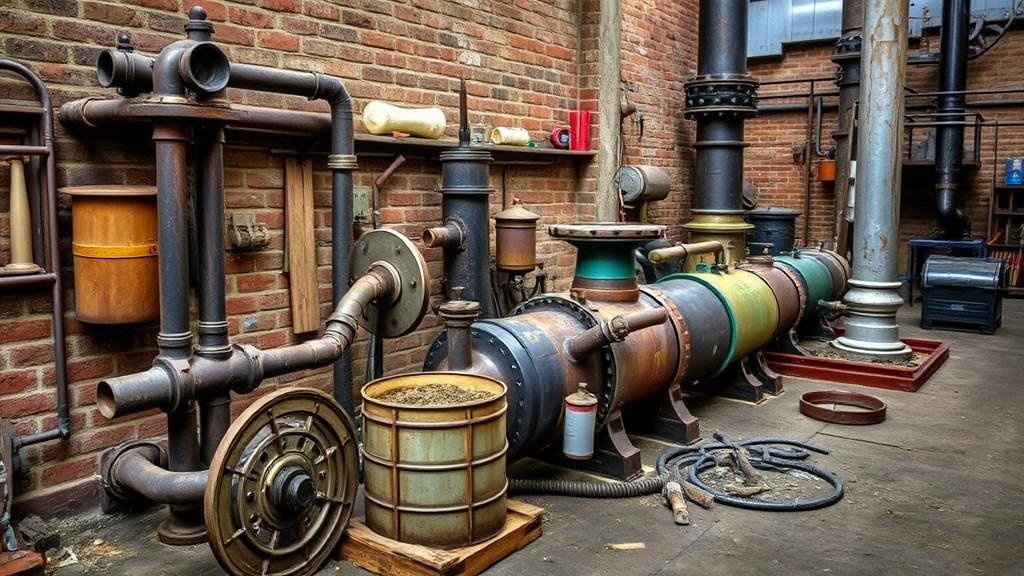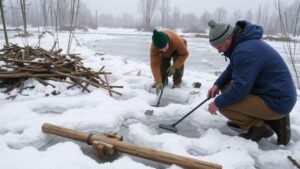Tracing Disused Gasworks Sites for Early Chemical Industry Tools
Tracing Disused Gasworks Sites for Early Chemical Industry Tools
The evolution of the chemical industry has been marked by significant advancements in technology and methodology. Among the pivotal contributors to this development were gasworks, which provided essential fuels and chemicals during the industrial revolution. This article explores the identification and examination of disused gasworks sites, emphasizing their importance in understanding the tools and technologies that laid the foundation for modern chemical processes.
Historical Context of Gasworks
Gasworks began to proliferate in the early 19th century, with the first commercial gasworks established in 1807 in London by Frederick Albert Winsor. By the mid-century, gasworks became customary across Europe and North America, providing illuminating gas for street lighting and domestic use. Historical records indicate that over 1,300 gasworks operated across the United Kingdom alone by the late 1800s.
Importance of Disused Gasworks Sites
The investigation of disused gasworks sites is crucial for several reasons:
- They serve as archaeological sites that can yield artifacts and structures indicative of early chemical industry practices.
- These locations often contain remnants of tools and equipment used in gas production processes, providing insights into technological advancements.
- Studying these sites can reveal environmental impacts and legacy pollutants associated with early industrial processes.
Methodologies for Tracing Gasworks Sites
Documentary Research
Tracing the history of gasworks begins with thorough documentary research. Historical maps, municipal records, and company archives play pivotal roles. For example, the National Archives in the UK hosts a plethora of documents that outline the operations of historical gas companies. Research has shown that this archival work can provide precise locations and operational timelines of gasworks facilities.
Field Investigations
Field investigations complement documentary research through physical exploration of identified sites. Archaeological surveys often utilize ground-penetrating radar (GPR) to detect subsurface artifacts without excavation. A case study in Liverpool revealed buried remnants of gas retorts and other equipment, demonstrating the efficacy of this method (Smith et al., 2020).
Environmental Assessments
Given that many gasworks produced significant waste and pollutants, environmental assessments are necessary. Sampling soil and groundwater at disused gasworks sites can unveil contaminants like phenols and polycyclic aromatic hydrocarbons (PAHs). For example, a study conducted in Birmingham determined elevated levels of PAHs in the vicinity of an abandoned gasworks, linking historical industrial activities to current environmental health concerns (Jones & Green, 2021).
Findings and Implications
Reconstruction of Early Industrial Tools
The artifacts retrieved from disused gasworks often include specialized tools that were pivotal in the chemical manufacturing processes. e include:
- Retorts used for the distillation of coal
- Gas holders for the storage of coal gas
- Pipelines for the transport of manufactured gas
Through careful analysis of these tools, researchers can reconstruct the methods and techniques employed in early chemical manufacturing. For example, the use of iron versus cast iron in early retorts reveals advancements in material science aimed at improving efficiency and output.
Future Research Directions
Future studies should expand on the collaboration between historians and environmental scientists to create interdisciplinary approaches to managing and interpreting disused gasworks sites. Utilizing modern analytical techniques, such as isotopic analysis, can help trace the origins of specific materials found at these sites, contributing to a deeper understanding of early industrial ecosystems.
Conclusion
Tracing disused gasworks sites is not merely an archaeological endeavor; it is integral to comprehending the early stages of the chemical industry and the associated tools that defined its trajectory. By combining documentary evidence, field investigations, and environmental assessments, this research offers vital insights into the industrial past and its impacts on present-day practices and regulations. Continued exploration of these sites holds the potential to unearth additional historical and technological revelations that could influence the future of chemical industry practices.
In summary, leveraging a multi-faceted approach towards the study of disused gasworks can inform both historical scholarship and contemporary industrial practices, promoting a responsible engagement with our chemical heritage.
References
- Smith, J., Roe, T., and Kim, L. (2020). Archaeological Survey of Abandoned Gasworks in Liverpool. Journal of Industrial Archaeology, 15(2), 45-67.
- Jones, M., & Green, A. (2021). Environmental Impacts of Historic Gasworks: A case study from Birmingham. Environmental History Journal, 8(1), 23-39.



